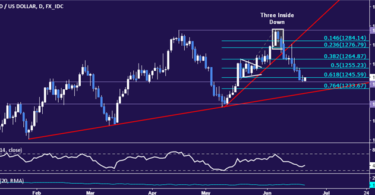Interest is quite possibly the most complex bit of math that the average person has to use everyday. Like the Force, it can be used for good, for evil, and it binds the galaxy together.
When interest works for you, it can make you a ton of money. When it works against you, it can cost you big. But you need to know how it works to take advantage. Fortunately, we can explain both cases.
Simple interest is what many savings accounts use to help you earn a bit of money in exchange for storing what you have with the bank. With simple interest, if you put $1,000 in an account, with a 1% interest rate, you'll get $10 back. Easy, right? Most ways you encounter interest are a variant on this theme, though. Here's how they work.
Compound Interest
Someone who probably wasn't actually Albert Einstein once said that the most powerful force in the universe is compound interest. While supermassive black holes might have something to say about that, compound interest is still pretty important, because it's how your money can make more money.
Compound interest works like this: you start with an initial balance, say $10,000. When you're paid interest–let's say 10% annually to make the math easy–that amount is added to your total balance. After one year in this scenario, you'll earn $1,000 in interest which is then added to your total balance. The next year, you have $11,000 in your account, so that 10% interest now yields $1,100. Your interest earns its own interest (in this case, an extra $100). This is an exceptional way for your money to make more money.
That's an extreme example to show how the math works—you'll rarely see 10% interest on a bank account, though. More likely you'll see something close to 1%, but over time, you can see how it would add up—it's basically free money!
However, when you get into investing—which, by the way, is extremely easy to get started with—compound interest (or returns, as they're known in investing) can make a much bigger difference. While typical rates of return are subject to a lot of debate, let's assume a moderate return of 8%—that's a lot more than the 1% in your bank account!
If you invest $10,000 today and don't add another dime, here's what it would look like in 25 years just on its own:
While it takes a few years to get started, after 25 years, the compound returns curve the chart upwards dramatically. Your $10,000 made $17,000 in regular returns, but nearly $25,000 in compound returns. This brings your total investment up to $51,794 by the end of those 25 years—again, without adding a single dime after the initial investment.
Let's take a look at that again, but this time let's say you add an extra $100 per month to your investment:
After 25 years, your $100 per month contributions will add an extra $40,000 to your savings. Simple returnsover that time will go from $17,000 to $43,520, and compound returns will rise to $47,044. For an extra $100 every month, your total investment by the end will be $130,564. That's a little more than $78,000 on top of what you would get with just the initial $10,000 investment.
Compound interest is a huge factor in how your long-term investments work. While you may not need to understand the practical application of this on a day-to-day basis (and in fact sometimes a more hands-off approach is good), it's essentially to understand that your money can make more money, which makes its own money. To put it in MMORPG terms, it's like stacking more and more buffs over time. For everyone else: it's really, really good.
Credit Card Interest
Credit card interest may not (usually) be compound interest, but it can still accumulate in a big way. When you get a credit card, you agree to pay a certain amount of interest as long as you carry a balance. Many people only concern themselves with making monthly payments, without considering how that interest is calculated–which is a really big deal. This lack of understanding is so bad that a law passed in 2009 requires creditors to warn you that paying only the minimum can cost you dearly in interest.
Interest on a credit card is calculated with an Annual Percentage Rate (or APR). The APR is the percentage of your bill that will be charged over a year. So, say that you buy a TV for $1000 on a card with a 24% APR. Assuming you don't buy anything else on that credit card (which we'll get to), you'll carry a balance of $1000, and you'll be charged $240 in interest in twelve months, or $20 per month.
Of course, you typically have to pay the interest first, so your “minimum payment” goes towards that $20 monthly interest first, and whatever else you pay reduces the balance. Most cards require you to pay at least 1% of your balance on top of the monthly interest, but that can still take forever to pay off.
This table shows what a year of monthly payments on a credit card with a $1,000 balance would look like if you only paid the minimum (defined as the interest plus 1% of the balance):
Every single month, you pay close to $20 in interest, but your total balance is only reduced by less than $10. Assuming you only paid the minimum due, this method would take 125 months and cost $1,332 in interest, in addition to the original $1000 price of the TV. You've now paid more in interest than you did for the TV itself!
Now take a look at this same account with a $60 per month payment:
After 25 years, your $100 per month contributions will add an extra $40,000 to your savings. Simple returns over that time will go from $17,000 to $43,520, and compound returns will rise to $47,044. For an extra $100 every month, your total investment by the end will be $130,564. That's a little more than $78,000 on top of what you would get with just the initial $10,000 investment.
Compound interest is a huge factor in how your long-term investments work. While you may not need to understand the practical application of this on a day-to-day basis (and in fact sometimes a more hands-off approach is good), it's essentially to understand that your money can make more money, which makes its own money. To put it in MMORPG terms, it's like stacking more and more buffs over time. For everyone else: it's really, really good.
Credit Card Interest
Credit card interest may not (usually) be compound interest, but it can still accumulate in a big way. When you get a credit card, you agree to pay a certain amount of interest as long as you carry a balance. Many people only concern themselves with making monthly payments, without considering how that interest is calculated–which is a really big deal. This lack of understanding is so bad that a law passed in 2009 requires creditors to warn you that paying only the minimum can cost you dearly in interest.
Interest on a credit card is calculated with an Annual Percentage Rate (or APR). The APR is the percentage of your bill that will be charged over a year. So, say that you buy a TV for $1000 on a card with a 24% APR. Assuming you don't buy anything else on that credit card (which we'll get to), you'll carry a balance of $1000, and you'll be charged $240 in interest in twelve months, or $20 per month.
Of course, you typically have to pay the interest first, so your “minimum payment” goes towards that $20 monthly interest first, and whatever else you pay reduces the balance. Most cards require you to pay at least 1% of your balance on top of the monthly interest, but that can still take forever to pay off.
This table shows what a year of monthly payments on a credit card with a $1,000 balance would look like if you only paid the minimum (defined as the interest plus 1% of the balance):
Every single month, you pay close to $20 in interest, but your total balance is only reduced by less than $10. Assuming you only paid the minimum due, this method would take 125 months and cost $1,332 in interest, in addition to the original $1000 price of the TV. You've now paid more in interest than you did for the TV itself!
Now take a look at this same account with a $60 per month payment:
This is considerably better. You're still paying interest, but much less (by the end, it's about $228), and you're done paying it off in 21 months. In other words, there's absolutely nothing worse than paying only the minimum monthly payment.
Of course, the counterpoint to this is the best possible use case: pay off your credit cards immediately. Unless you find yourself with a no-interest deal and you stick to it, credit cards are little more than a drain you can pour money down over the long-term. The one way around this is to pay off your balance immediately. Interest is only charged on balances carried from month to month. If you never carry one for longer than a month, you're golden.
Most loans work along fundamentally similar principles to credit cards. You have a balance, you pay a certain percentage in interest, and make payments over a certain duration. The primary differences between credit cards and loans is how and when interest is applied (as well as how long the loan can last). Some loans like houses or cars also have even more complex methods of calculating interest, so if you see a term you don't recognize, be sure to check it out before signing.
When (and How) Interest is Applied
The percentage on interest is only part of the equation. The other part is when that interest is applied. In the credit card example above, interest is applied monthly, and it's due immediately. This isn't the only method of applying interest. Here are a few other ways interest can be applied:
- “No” Interest Credit Cards: Some credit cards will offer a promotional period where no interest is charged on a purchase. When the promotional period is up, it can either begin charging you interest on your existing balance, or retroactively calculate interest on any transactions left unpaid. Be sure to check your credit card terms for specifics.
- Delayed Interest: Student loans in particular allow for interest to be delayed until a set time. Federally subsidized loans, for example, don't start accruing interest until six months after graduation, which helps save you from four years of interest piling up before you can even pay for it.
- Interest Applied to Principal: In the credit card example above, the interest was due immediately. For some credit cards and loans, this isn't always the case. Interest can be applied to your principal, which means it compounds as you pay it off. Paying more than the minimum will still cause your overall amount due to decrease, but some loans may allow you to make a minimum payment that is less than the interest accrued, so, again, check your conditions.
The ways that interest is applied to debt over time can vary so widely between lenders and types of agreements that it's almost impossible to go over them. Before you take out any type of loan, be sure to go over the details as thoroughly as possible.







